Secret Lives of Sharks
This week, fetch your swimmers, or maybe not, because we’re diving into the secret lives of sharks, including hearing how some of them live for hundreds of years. Plus, in the news, antibody treatments for Covid-19, plastic made from peas, and crayfish on antidepressants...
In this episode
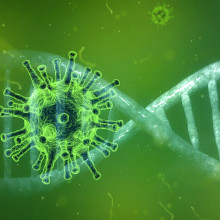
00:56 - Using antibodies to treat COVID
Using antibodies to treat COVID
Martin Landray, University of Oxford
When Donald Trump caught coronavirus, you might recall that one of the treatments he received was an experimental cocktail of covid antibodies designed to give his immune system a helping hand to fight the virus. At the time, there wasn’t much evidence for the effectiveness of this therapy, but now researchers at Oxford University have announced initial results from a trial conducted on thousands of Covid patients treated by the NHS. Given early, it seems, and to the right recipients, these lab-made antibodies can save lives. Martin Landray spoke to Chris Smith about how it works…
Martin - So these antibodies are, if you like, copies of human antibodies and a company in this case, Regeneron, screen through lots and lots of antibodies to find the ones that bind the tightest to the key parts of the so-called 'spike protein' on the outside of the Corona virus that causes COVID. So they selected, if you like, the best two and then made them in very large quantities in a manufacturing plant. And then we use that as a treatment, which we then give to future patients. And those patients are given the treatment as an intravenous drip over about an hour.
Chris - So this is a cocktail of two different types of antibody, both of which target the virus, but coming at it from slightly different angles, so they bind onto different bits of it?
Martin - Yeah. They bind on to slightly different parts of the so-called 'spike protein', this sort of the sticky out bit on, I guess we've all seen the photographs and the images in the papers. The reason for using two, is a sort of belt and braces approach. If there was a mutation in the virus, if there's a new variant, then that might impact the ability of one to bind, but wouldn't impact on the ability of the other. It's a belt and braces if your belt fails, but your brace is intact, your trousers still stay up.
Chris - And what were you testing?
Martin - So we were testing whether, amongst the patients who have COVID and come into hospitals, whether this antibody drug would reduce the chances of dying, perhaps improve the speed at which people get out of the hospital and so on. And so nearly 10,000 NHS patients as they came to hospital and volunteered, and we did, what's called a randomized trial. You toss a coin and if it comes down, let's say heads, then the patient's got this extra drug on top of all the best that the NHS can offer. And it comes down tails, they got the best the NHS can offer, but without this drug. And what we found is that this antibody drug worked really very well in a particular type of patients. We are all supposed to produce antibodies in response to an infection with coronavirus, but some people somehow, for whatever reason don't manage to do so, or it's somewhat delayed. So these patients get sick and they haven't got good antibodies of their own. And what we found was if we use the antibodies in the drug and give those to patients who don't have their own antibodies, actually we can reduce the risk of dying. We can shorten the hospital stay, which is also great. And we can reduce the need for those patients to go onto a ventilator. So if you like in this group of people who are at high risk, they're not fighting the infection well for themselves because they don't have antibodies. If you give them antibodies, then their chances of a good outcome are substantially improved.
Chris - What's your window of opportunity to get in there with these therapeutic antibodies in order to achieve those improvements?
Martin - Really, I think within the first 24 hours or 48 hours of people coming into hospital would be, I think how this will get rolled out. So this is how it will be delivered in the future. So I can well imagine in the very near future patients who go, sick enough to go to hospital with COVID will not only have a nose and throat swab to test for the virus, but they'll also have a blood test for antibodies. And if they don't have antibodies of their own the treatment would then be given.
Chris - And how big a difference can this make?
Martin - Well, what we see is that the people who have not fought the infection properly for themselves, probably the risk of dying is in the order of 30%. So nearly one in three patients, sadly, don't survive the hospital admission. If the drug is given to these people, then we reduce that down to about 24%, so that's an improvement of a fifth.
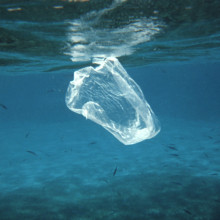
05:21 - New plastic alternative made from peas
New plastic alternative made from peas
Marc Rodriguez, Xampla
We all use plastic every day, and a lot of it regrettably ends up contaminating the environment, where it doesn’t break down. Now a Cambridge University spin-out company called Xampla may have found a possible solution with a biodegradable plastic film made from peas.
Sally - Plastic films are everywhere. Just looking around my kitchen right now. I've got it around bread, tomatoes, cereal. Plastic is strong and flexible, and it's very durable, which is great if you need it to last for decades, but I don't really need my cereal bag to last for decades. And if it ends up in the environment, it's not going to biodegrade. But what if an alternative to plastic film was also tucked away in my kitchen in this. A bag of peas.
Marc - We just take pea protein, a little bit of concentrated vinegar and a little bit of heat and energy. And essentially just by combining all those things produces our material, which is a very strong, flexible, and transparent material that can be used as a single use plastic replacement.
Sally - That's Marc Rodriguez from Cambridge spin-out company Xampla talking about a new material they've invented, a biodegradable film made from peas.
Marc - If I was giving you a tiny piece of this film, you couldn't really tell the difference with plastic other than that it feels a little bit softer. And sometimes it's a bit more brown in color that it's not completely clear, but other than that, it almost completely, looks like plastic.
Sally - The Cambridge team got their inspiration from spider silk. Gram for gram silk is stronger than steel and is made almost entirely from protein. The protein molecules in the silk are all packed tightly together, which is what allows it to be so strong while also being flexible. But rather than try to use silk proteins to make their plastic alternative, the researchers realise that they could use pea proteins instead, which being plant-based, are much cheaper and more readily available. They were able to do this because all proteins have a very similar underlying chemical structure. So with the right manipulation, you can make a pea protein look very similar to silk protein.
Marc - Fundamentally, you could take any protein and generate these structures that you find in silk.
Sally - And because it has the same properties as spider silk, that also means it biodegrades.
Marc - You can think of it as if it was like a food waste. We are taking something that already exists in nature and putting it back.
Sally - But if a material biodegrades too readily, it will start rotting on the shelves before you've even finished using it. So I asked Marc what stops that from happening?
Marc - The really good thing about plant proteins is that they're very insoluble. So that will provide them with a lot more stability specifically when there's like a very humid environment, for example. But at the same time, they can still break down in the presence of microorganisms and enzymes. So that essentially enables you to have very good shelf life. But then when that material ends up in the environment where there's a lot more microorganisms and bacteria to start breaking it down, it will then break down completely.
Sally - There have been quite a few biodegradable plant-based plastics around, like cellophane has been around for literally a hundred years. So what makes this material better?
Marc - It's not one material that's going to solve all the plastics problem. And actually cellophane is a great material itself. The problem with cellophane is it probably requires very like aggressive chemicals to be able to process it. Traditionally, cellophane manufacturers use carbon disulfide, which is a very polluting chemical. When you think about trying to find the right materials to replace plastics, you don't have to think only about the end of life or its biodegradation. You also need to look at the raw materials, how those raw materials are processed and whether the entire process to make that material is actually sustainable.
Sally - What are your plans for this material?
Marc - Lots of plans at the moment, and it's not just the single use plastic problem we're trying to solve. It's also the microplastic, because there's lots of small particles, a small microplastics that are added to a lot of consumer products. So just as an example, fabric softeners, a lot of fabric softener, if not the majority of them, have tiny microplastic particles. And that's to provide specific function when it comes to release fragrance. So one of the main areas we're working on is specifically that area, which is replacing microplastics in a lot of consumer products.
Sally - And how long is that going to take?
Marc - We are expecting that next year, we will launch our first product specifically on the microplastic replacement, but we already working on generating these transparent films that can replace single use plastics and things like sachets, for example.

10:48 - Christian Eriksen: cardiac arrest in football
Christian Eriksen: cardiac arrest in football
Rohin Francis, Essex Cardiothoracic Centre
If you were watching the Euros a week ago on Saturday, you’ll have been shocked by the sight of Danish midfielder Christian Eriksen suddenly collapsing to the ground. According to their team doctor, it was a cardiac arrest - and Eriksen very briefly died right there on the pitch. It’s only thanks to some quick CPR and defibrillation that doctors managed to get him back - he went immediately to a hospital to recover. Strangely, they’ve since claimed they don’t have an explanation for the incident, and that examinations of him - in their words - ‘look fine’! So what might cause a person to drop like that, seemingly out of the blue? Phil Sansom went to Rohin Francis, a cardiologist from the Essex Cardiothoracic Centre, to find out whether he’s seen what’s happened...
Rohin - I wasn't watching live. It was my wedding anniversary, and my wife told me that I should be paying attention to her for some reason... but from watching back the replays, Christian Eriksen appeared to just collapse to the ground unprovoked. He wasn't moving, they lost a pulse, and that's when chest compressions started and he also was defibrillated.
Phil - This can't be a usual thing to happen, right? Someone at the peak of their fitness, quite young, even someone who's been screened for heart problems... so what generally could cause something like this?
Rohin - In any 29-year old a cardiac arrest would be a very rare event, but in a very, very fit 29-year old with no medical problems it's a very unusual event. It's about - something in the region of 1 in 50,000 sportspeople will suffer something like this. But because professional athletes do push their bodies much harder than the rest of us, these problems can manifest whilst engaged in competitive sports, so that's sometimes why we see these rather high profile occasions. And no medical test is a hundred percent accurate, and unfortunately there is a false negative rate, and sometimes abnormalities are just not detectable.
Phil - If you had to go into this as a cardiologist and give, for example, three possible explanations for what this might be, what would they be?
Rohin - If we took somebody competing in competitive sport in general, we know that the most common cause of sudden cardiac arrest in athletes is something called hypertrophic cardiomyopathy. And that's an abnormal thickening of the heart muscle itself. The heart is mostly just a big muscle that that's continually beating, and when the muscle starts thickening that can cause problems. However, one would hope that would have been detected with scans. Again, they're not perfect, and sometimes it can manifest a bit later, but at Christian Eriksen's age, you'd imagine that that would have shown up on a scan. It could be any number of other structural abnormalities to the heart; or it could be an electrical abnormality, and that's probably more likely to be the case here, because electrical abnormalities often don't show up on screening tests because the heart can look completely normal. I suppose another possibility is whether this is an inflammation of the heart muscle, which may not have been present when he'd had previous testing. There's no evidence that Christian Eriksen had COVID, but other viruses as well can cause something called myocarditis, which is an inflammation in the muscle of the heart. But again, this is all pure speculation at the moment.
Phil - I mean, presumably all of these are still pretty rare.
Rohin - Yeah. So I think that's an important point to take home - that these are very unusual. It's obviously really shocking to see someone in peak physical fitness suddenly suffer a life-threatening medical emergency, but these are rare things that happen. Perhaps a more positive message to take away is, if this were to occur, you would know what to do. If somebody collapses, we don't typically recommend checking for a pulse unless you are trained in that, and if somebody is not responsive and not breathing normally, and not breathing at all for 10 seconds, to start chest compressions. And I think there's a lot of hesitancy because people worry that that might be uncomfortable or it's not the right thing to do, but it definitely is in this kind of situation, because you can save a life. So chest compressions, and then early defibrillation. And with every minute that passes, someone's chance of having a full good recovery drops by about 3-7% per minute. So every minute counts, and the sooner you start chest compressions and attach a defibrillator, the higher the chance of that person making a full recovery.

16:23 - Conditioner COVID catcher
Conditioner COVID catcher
Jiaxing Huang, Northwestern University
Now “hairs” an interesting story: scientists have turned the conditioner you rub on your head into a covid-19 trap! Agents like the coronavirus that causes COVID-19 - in common with many other diseases like the flu - spread through liquid droplets that spray out from infected airways when we speak, cough, sneeze or even just breathe. Now researchers at Northwestern University have designed a surface coating, based on the chemicals used in hair conditioner, that can catch droplets that brush past the surface so they don’t bounce back into the air and infect someone. Adam Murphy heard how Jiaxing Huang made the jump from hair care to covid in the first place…
Jiaxing - Yeah, that's a nice coincidence there. Before the pandemic, part of my lab was actually doing hair dye research. So we had a chance to understand and learn a number of established chemistries in hair care. So when we try to find something to trap the aerosol droplets, one conclusion we, came to is that we need to find something that water droplets stick really well. Well, if you think about hair conditioner, one of the main ingredients in there is trying to coat the hair uniformly and then make the hair surface absorb moisture. So we thought that maybe that's something we can just start to try right away. In the first proof of concept, it was very straightforward. We have this polymer, you dissolve it in water, and we can make a paint. So you can then just spread it on the surface or you can brush coat it, or you can use a rod to spread it across a flat surface. In the next generation, we wanted to apply these to many different kinds of surfaces. So we decided to make the solution more versatile instead of treating existing surfaces to suit the coating solution, we want to make sure we have a solution that can work generically. And indeed, we can coat this material on wood, metal, plastic, textile, even concrete walls.
Adam - And then how does it actually work? What's going on that lets it stops the aerosols?
Jiaxing - A round droplet comes in, and when it hits the surface, it will flatten out into a pancake shape. But it doesn't stop right there because the droplets are somewhat elastic. It will contract and then bounce back or break up into small pieces. So the key here is the pancake stage. So that's a stage with an enormous contact area with the substrate. We thought that if we can make the substrate a little bit stickier so they can grab the pancake shape droplet, then you wouldn't be able to bounce back. That's sort of the first clue that's making it more water liking so it can glue to the water droplet better so that it can prevent them from bouncing away.
Adam - And how well does it work?
Jiaxing - It actually works quite well. We had a demonstration where we coat a plastic sheet and rolled up into a tube, and now we have these lab-generated aerosol steams and we pass them through the tube. Now without coating, you will see in just a few seconds, the aerosol streams will flow down the tube and escape. But with the coating, it actually lasts for much longer. You can wait for one or two minutes, with a continuous input of aerosol streams and barely anything comes out. So that's a strong indicator that all the droplets are captured.
Adam - Where would this go? What do you imagine this being used for in an ideal case?
Jiaxing - If you look around in your room, you actually see enormous areas of indoor surfaces, right? For example, a window and the window blinds, the ceiling and the wall. And most of these areas are what I call low touch or no touch areas. We're not going to touch those areas at all. So why don't we repurpose this idling surface and convert them into a passive aerosol absorption device,? In this way, if you have a lot of aerosol generators in a room - by the way, that's us; if we have a lot of people talking, singing in the room, we are excellent aerosol generators - so if we have these aerosols being generated indoors, then I'm hoping these surfaces can help to remove these aerosol droplets and reduce the concentration. So this will reduce the probability of infection. Now another, perhaps more immediate, use is that you can try to coat this material on transparent dividing barriers. So for example, plexiglass barriers that have become ubiquitous in this pandemic. You see them everywhere. So if we make the plexiglass droplet-absorbing, then we can not only protect you, we can also protect others around in the same environment.
Adam - What's stage are you at in its development? And what's the next thing to do.
Jiaxing - We were only able to test aerosol droplets, that were generated by lab apparatus, but I'm hoping that after this paper is published, it becomes open knowledge. And I would love to see people in other parts of the world, anywhere, feel free to pick it up and design your own human droplets trial. I don't think that's very difficult to do. I think you just need to go through the proper procedure and find the proper collaborator. And I'd love to see these being used.
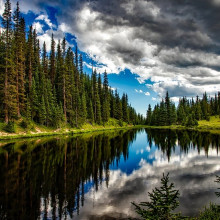
21:49 - Crayfish become bolder on antidepressants
Crayfish become bolder on antidepressants
Lindsey Reisinger, University of Florida
Medications that we use can end up in the environment, where they can alter the behaviour of wild animals, potentially upsetting the ecosystem. That’s the finding of a new study from the University of Florida. Eva Higginbotham has been hearing from Lindsey Reisinger what happens when crayfish are exposed to the antidepressant citalopram, which can pass from wastewater treatment plants into the streams where they live. So why crayfish?
Lindsey - They tend to be really abundant so they can have large impacts. They're major processors of things like algae and leaf litter at the bottom of the stream, so dead leaves that fall in the stream, and also are predators on other small aquatic organisms like aquatic insects. And then they're a major connection to higher level predators. So they're eaten often by predatory fish or by wading birds or mammals like raccoon or mink. So we were really interested in their behavior because they're so ecologically important, and we thought that changes in their behaviour might change aspects of the ecosystem. We specifically wanted to know how an antidepressant, in this case citalopram, which is one of the most commonly prescribed antidepressants, affected the behaviour of crayfish. And we were also interested in how that might alter the impacts of crayfish on the ecosystem.
Eva - So how did you go about studying the effects of antidepressants on crayfish?
Lindsey - We set up a study in artificial streams. So these are tanks that have water circulation, and we put natural components of streams into the tanks. We collected rocks, we put packs of leaves that had been set out in streams and were colonised by invertebrates living in the stream, so small aquatic insects and crustaceans. Then in half of the streams, we put three crayfish that we also collected from the same stream where we got all the other organisms and we added about five milligrams per litre of this common antidepressant, citalopram. So we're probably on the high end of what's common, but definitely in the range of what you would find in the natural environment.
Eva - And did you see a difference in the crayfish that had been exposed to the antidepressant stream versus the non-antidepressant stream?
Lindsey - Yes we did. So after two weeks in the experimental streams, we removed the crayfish and we tested their behaviour. And we found that crayfish that had been exposed to the antidepressant were bolder. So we put them inside a shelter and they came out of the shelter into a novel environment almost twice as fast as the crayfish that had not been exposed. And then we also offered them a choice of water that had different scents in the experiment. So on one side of our tank, we had water coming in that smelled like another crayfish of the same species, and on the other side, we had water coming in that smelled like a really great food source. And when crayfish had been exposed to the drug, they spent almost three times more time in the section that smelled like a food source. And the other crayfish really just walked around the tank and spend an equal amount of time in both sections.
Eva - And do you think that this change in behaviour in the crayfish, do you think that could have consequences if that were happening in the wild?
Lindsey - Yes, we do think it could. So we did measure the ecological effects of crayfish in these tanks, but we didn't see that crayfish that were exposed to the drug had different ecological effects than those that were not exposed, but this might be because we didn't run it for long enough. So in retrospect, we've thought that it probably takes some time for the drug to accumulate in the crayfish and change the crayfish's behaviour. And then it probably takes more time for those changes in behavior to affect the ecosystem. We would try to run this over a longer time period and look for if these changes in behaviour could have larger effects.
Eva - Is there anything we need to do? Is there anything that we should be changing to prevent that from happening?
Lindsey - So I think the easiest thing that we could change would be to make sure we're properly disposing of medications. So some ways that you can do that is there are lots of programmes that will take back medications that are unused. So that would be most ideal thing to do. And if that's not possible, the best thing to do is to put the medication in a container with something absorbent that would be unpalatable to animals. So coffee grounds is a great example and then enclose it in that container before you throw it away.
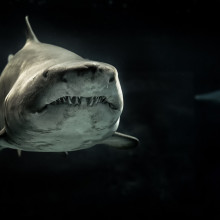
28:21 - Shark pre-birth battles
Shark pre-birth battles
Deborah Foote, The University of Queensland
Let’s take a peek at how sharks begin their lives. These fish have three main ways to make baby sharks, one is by laying eggs and another is by giving birth to live young. Some species, like grey nurse or sand tiger sharks, use a mixture of the two and it can get brutal: baby sharks eat each other inside their mother! To dive deeper into how sharks reproduce, Charlotte Birkmanis spoke with Deborah Foote.
Charlotte - With everything going on, life is hectic at the moment. So how about a beach walk? Walking along the beach, you kick something with your toe. After the initial surprise wears off and you stop the dog from trying to eat it, you see a tough, dark brown spiral, about eight centimetres wide and 15 centimetres long. You dust the sand off it, stop the dog from trying to eat it again and realise it's an egg case from a Bullhead shark. And although they look quite different from the traditional idea of an egg, these empty egg cases occasionally wash up all over the world. This gets you starting to think about sharks, and of course a certain tune comes to mind... There is so much more to these creatures of the deep than just their teeth, and we have so much more to learn about them, but let's start from the beginning.
Charlotte - Where do baby sharks come from? Egg-laying is used by a small number of shark species. These eggs are often palm sized and come in a variety of colours, shapes, and textures, depending on the species of the shark. We often call these mermaid purses. Some shark species carry the young in a similar way to us, with the baby in a womb attached to its mother with a placenta, but other shark species do something in between. They produce eggs, but don't lay them. The eggs develop inside the mother and are nourished by an egg yolk until they're ready to hatch, and then they're born live. Let's find out about one species that has one of the most fascinating starts to life, though I might be a bit biased because I'm a shark scientist! For them, life starts with a cannibalistic pre-birth blood battle. It's a shark eat shark world out there.
Deborah - In Australia we call them Grey Nurse sharks, but they're also known as Spotted Ragged Tooth sharks or Sand Tiger sharks in other places in the world.
Charlotte - That's Deborah Foote from the University of Queensland
Deborah - And the pups will hunt and consume their brothers and sisters while in utero.
Charlotte - Now that is some intense family rivalry going on right there! But there's also some competition going on at the genetic level as well.
Deborah - The mother will mate with multiple partners, the pups could have different dads. Only one pup ends up being born from each uterus.
Charlotte - Yeah, you heard that right, Grey Nurse sharks have more than one uterus - they have two!
Deborah - Because they have eaten the other brothers and sisters, so by the end of it they've essentially had one father for their offspring. The first pup that hatches, so the biggest one, is the most likely to be the surviving pup because they can eat its small brothers and sisters, which are usually the ones that are from other dads.
Charlotte - But the food supply doesn't end there - after they're finished snacking on their siblings, their mother keeps the canapes coming by supplying a virtual conveyor belt of unfertilised eggs to nourish their offspring. This gives them quite the advantage when they're out in the world and have to start fending for themselves.
Deborah - They're born quite large, so up to about a metre total length, which is quite big if you're wanting to avoid being eaten by bigger fish. They've had practice already feeding themselves by eating eggs and other embryos in the womb.
Charlotte - They can also swim in the womb and even go from one uterus to the other, this may help them access those little hard to reach eggs and embryos.
Deborah - One of the reasons that this mode of embryonic nourishment has developed - so being able to feed itself inside, practice swimming inside - is that then they're at a competitive advantage when they get to the outside world because they already know how to feed themselves, they're already well-practiced at swimming and because they're quite big, they're less likely to be eaten by other predators.
Charlotte - Although somewhat scary looking Grey Nurse sharks are not aggressive. But the pups? They sure are feisty!
Deborah - The researcher that discovered that Grey Nurses eat eggs while in the womb to nourish themselves had cut open a dead pregnant female shark and was reaching inside to have a look inside the female reproductive organs, felt like he had had a bite on his finger. It wasn't enough to puncture the skin, and of course then when he opened up further and had a look at the pups, he realised that they had quite well advanced dentition. So a lot of baby sharks, before they're born, have a sheath over their teeth, but that is not the case in Grey Nurse. They have nice sharp teeth for eating those eggs and the other embryos as required during gestation.
Charlotte - And this pregnancy can go on from nine to twelve months, that's a long time for the Mum to be carrying around pups squirming around and eating each other inside her. So the next time you see a shark gliding around, or watch one on TV, think of the investment that the mother has gone into to get it this far
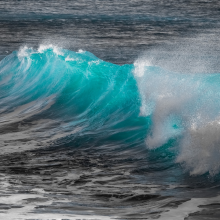
34:09 - The secret social lives of sharks
The secret social lives of sharks
Yannis Papastamatiou, Florida International University
Far from being solitary hunters, some shark species are social. In fact, some sharks like to ‘hang out’ with the same group of animals for years in a relatively small location. Adam Murphy had a chat with Yannis Papastamatiou to find out what happens when sharks socialise, and if they actually make friends.
Adam - For some, the stereotypical image of a shark is of a lone predator sneaking its way through the ocean with no company, not at all like a pack of wolves. But science is starting to challenge that assumption.
Yannis - At least for some species we have evidence that they do like other individuals would like to spend time with other individuals, and how stable that is can vary. It may be that they just like to hang out with a certain individual for, let's say, one evening. And then the next evening they'll be hanging out with somebody else. But in some cases we have found some sharks which seem to hang out with each other, not continuously on and off, for up to four years.
Adam - That's Yannis Papastamatiou, who's been studying sharks off the coast of the Palmyra Atoll, which is a tiny 12 kilometre long island in the middle of the Pacific ocean. They've been tagging them to see where they go around the ocean and it seems like around this Atoll at least, there are little shark gangs forming.
Yannis - So for example, we know that they show strong residency to the Atoll, and all of them seem to be living there for multiple years, if not much, much longer. We also unexpectedly found that sharks only use small portions of the Atoll. So the Atoll is not very long, it's about 12 kilometres in length, so you're not talking about a very big place. But we found that sharks hang out in small sections. So a shark, for example, that lives on the west side of the Atoll only really stays on the west side of the Atoll. Whereas one that's on the east side of the Atoll only stays on the east side. And that's surprising because a shark could pretty much navigate the Atoll in a day, if it wanted to, that's not a great distance for a shark, but they choose not to. And we also then found out they kind of hang out in these groups together within their various regions and hang out with other individuals within those groups. And sometimes, as I was saying before, those social associations could last many years.
Adam - So why might such long sharp partnerships form up? What's in it for the sharks?
Yannis - Animals sharing information is quite common, and information could be things such as the location of prey. It could also be the arrival of a predator, things like that. The information isn't something that the animal may necessarily want to share - not saying that they purposefully share it with each other, but it's shared nonetheless. And in the case of sea birds, for example, you may have birds that head out to sea to forage, and you may have some birds that will follow other birds because they have a good idea that that bird knows where the good prey can be found. This may be beneficial for everybody in the group because overall your foraging success or hunting success goes up.
Adam - Because this hasn't been studied in detail, we don't know a lot about why sharks do this. And most of our best guesses have to be based off seabirds. But it does have implications for where the concept of being sociable came from in the first place.
Yannis - Sharks in some ways simplify things because they don't have parental care, for example. So a lot of the more sort of complex social interactions you might see with other animals like mammals, you don't have. So it means that we can sort of narrow down the potential drivers of sociality in these animals. There also are some conservation implications because if you have, for example, animals that have evolved behaviours that involve, let's say group foraging, what happens if those groups are reduced in size? So as we know many shark populations are facing threats from overfishing, and it may be more detrimental than we realise because when you make these groups smaller, now these animals that may have evolved mechanisms that involve group hunting can no longer do that. So what does that mean for the forging success for those individuals that are still around?
Adam - And this partnering up? It's not just a good offensive strategy. It's a pretty good defensive one too.
Yannis - Sometimes it may be related to hunting. Sometimes it's going to be related to defence. Again, we like to make the claim that sharks are top of the food chain, top predators, but that's only true for a few species. Most sharks are not at the top of the food chain and they actually have predators. Being in a group can actually have a defensive function as well, almost like a fish school. So that's something we see off our coast here in Florida, where we have, in the spring, tens of thousands of Blacktip sharks, which aren't small, they're about 1.5 - 1.6 metres long, but they are hunted by Great Hammerheads, which are also quite abundant around here. And so you can see Great Hammerheads trying to stalk the group, but once individuals in the Blacktip group have caught wind of a Great Hammerhead, you could see that information spread because suddenly everybody starts to flee as that hammerhead tries to catch its prey.
Adam - So why does it matter then if our view of sharks isn't quite the one we thought it was?
Yannis - We tend to think of sharks as just mindless predators. And the more we find out about them, the more we realise that that's really not the case. In terms of sociality, I like to kind of use the term that this is the secret social lives of sharks. And it's not because they want to keep it a secret, it's more that up until recently, we didn't really know it was there.
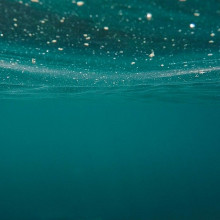
39:51 - Greenland sharks: the old man of the sea
Greenland sharks: the old man of the sea
Jena Edwards, Royal Netherlands Institute for Sea Research
One species can really push the boat out when it comes to longevity. Greenland sharks rank as one of the longest living species on the planet, surviving for hundreds of years. Jena Edwards told Chris Smith about this elusive ocean dweller.
Jena - Well, Greenland sharks are very large, sluggish animals that have sort of a zombie-like appearance. They have very dark grey skin, sometimes with a light coating of algae, because of their very slow swim speeds. And they have these very pale milky eyes that give them a death-like appearance.
Chris - So if they've got pale milky eyes, what would they make of me?
Jena - So they have a great sense of smell. So they might know that you were there. However, they probably wouldn't be able to see you because they have a lot of corneal damage from parasitism by copepods that attach to their eyeballs. So these parasites anchor into the eyeball and they actually eat the tissue on the surface of the eye, which causes damage and thickening of the lens making it so that they can't see very well.
Chris - And what would these sharks eat then?
Jena - So they eat a wide range of things. They're very astute scavengers, but they also feed on things such as squid and fish and even Marine mammals. They also eat flat fish that typically hang out on the bottom. And also that's a great place to find dead animals that they can scavenge such as whale falls.
Chris - And this question about how long they live for, how did that surface in the first place, and why do they live so long?
Jena - So, one thing that makes Greenland sharks interesting is the fact that they're the only shark species that lives as far north as they do. So they're inhabiting very, very deep, very cold waters. And this gives them traits such as slow swim speeds and very low metabolism. So this led to the question of age, given that many shark species that are able to live quite a long time, this cold water just enhances that ability.
Chris - Terms of actually how we know that they live as long as that, how did that come to light?
Jena - Yeah. So typically sharks are aged by looking at rings on the vertebrae. However, Greenland sharks don't have any calcified structures such as these. So researchers had to actually look at the centre of their eye lens in their cornea. And the tissue that's laid down in the core of their eye lens contains carbon atoms that were incorporated during their prenatal development, so when that shark was still in the womb. And this carbon signature reflects that of the environment at the time of the shark's formation, which allows us to determine the date of its development and therefore giving us an estimate of its age.
Chris - So that's what researchers have done. They've happened to have gotten hold of some eyeballs from the sharks and then done carbon dating on the lens because it doesn't change over their lifetime. And that gives you the sort of timestamp of when this shark was born.
Jena - Exactly.
Chris - And how long does the average Greenland shark live?
Jena - So what researchers found looking at female Greenland sharks of average size, so ranging from 81 to about 500 centimetres, they found that most of these sharks were centuries old, with the oldest being 272 years, but possibly over 500 years old,
Chris - Goodness. And when they live that long, do they, like a human, kind of get to adolescence, become sexually mature, and then they're just adults for a really long time, or is the whole of their life course spread out in the sense that they take a really long time before they can even reach reproductive age and then they start reproducing?
Jena - Yeah. So that's a really interesting point. The same paper, these Danish researchers estimated that the age of sexual maturity is around 150 years. So the adolescent and juvenile stage of these sharks is very, very long and it takes quite a while before they reach adulthood and are able to reproduce.
Chris - And there must therefore be implications if a species takes 150 years before an animal is of reproductive age, that has got to have consequences for its sustainability. If any kind of threat comes along, if you see something that causes your numbers to drop, or if there's some kind of pressure on your population, it's got to have an impact.
Jena - Yeah, absolutely. And this is something we see in long-lived fish species as well. Having this really late age at maturity means that the population can't bounce back as quickly from drops in numbers. And it means that we really have to take preemptive steps to prevent population declines that exceed the point at which these animals can recover. So for something that matures at 150 years, we have to be very cautious.
Chris - Does that mean then, that actually these sharks have survived in order to have evolved to a point where they have to be 150 before they can reproduce, that actually, they've had a pretty stable and a good time over evolutionary time because they can afford to have arrived at that situation. And it's only now we've come along or other pressures in the environment have come along, that actually they could be in jeopardy?
Jena - Yeah. That would be a good thing to assume. We don't know exactly the mechanism of this aging, how they've managed to survive so long. That's still something we're looking into, but it does suggest that they have lived a very stable, um, evolutionary history.
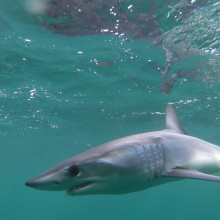
46:19 - Sharks are in dire straits: how you can help
Sharks are in dire straits: how you can help
David Sims, University of Southampton
With many shark species living far from shore and in the depths of our oceans, it can be a case of out-of-sight, out-of-mind. We may think that since sharks have been around since before the rings of Saturn were formed that they can cope with any changes that come their way, but that is not the case. Adam Murphy had a chat with David Sims to discover what's going on...
David - Well, sharks of the open ocean - these are sharks that swim far from land, they live most of the time in the top layers of a few hundred metres, perhaps down to a thousand metres - it's incredible to think that over the last 50 years they've been exposed to high rates of exploitation from commercial, industrialised fishing activity. There's been, over the last 50 years, about an 18 fold increase in the relative fishing pressure. So far and away fishing is the main threat facing sharks. There are other things - habitat loss and pollution - but fishing is the principal thing that we've seen driving down populations.
Adam - And what kind of impact does it have? What numbers of sharks are being pulled out of the ocean by fishing?
David - The numbers are colossal actually. There have been relatively conservative estimates ranging from 63-273 million sharks pulled out of the ocean, so about a hundred million sharks roughly every year. And about 50% of those are pelagic sharks, oceanic sharks. And since about the 1950s, when this industrial scale fishing started to escalate... large vessels, a few hundred tonnes, with refrigeration, navigation, wayfinding equipment as well as sonars, and also very powerful winches and gears. Some of these longliners, for example - they can deploy a longline with a thousand hooks that's a hundred kilometres long, and do that on a daily basis. And there are several thousands of these plying the oceans. So over the last 50 years, we've seen about a 70% decline in oceanic species of sharks and rays. And that's largely because there's a huge overlap between where the sharks like to hang out - where they prefer to be, their preferred habitats - and where the fishers want to be to catch not only sharks, but also tunas and swordfish.
Adam - Let's say the worst happens and all the sharks and their relatives go away. What impact would that have? Why is this such an important issue other than - it's sad that there are no more sharks?
David - I guess people say, "well, hold on a minute, so what if the sharks aren't there anymore?" Well, clearly sharks have been around a very long time, as we've been hearing in the programme, and they're important components of the ecosystem. They're not all top predators; they have really important roles as mesopredators in stabilising the diversity of food webs. And so it's crucial that some controls, more controls than we have had up to now, are put in place to try to allow these populations to recover. So for example, the shortfin mako shark is the fastest shark in the sea, it can swim up to 40 miles an hour when it's hunting and chasing down these different fish species. And what we found with those is that their population in the North Atlantic at least has declined by about 40% over the last 50 years. And as Jenna was saying, the longevity of these sharks, the late age to maturity, is a problem. Shortfin mako sharks don't reach maturity for a decade or more, and they don't have very many young - a female might only have 12 young every three years. So a species like that just finds it a real problem to replace itself, if indeed the exploitation is happening fast enough. There's only a 60% chance of stock recovery by 2070...
Adam - Wow. That is really coming up. And then speaking of going into the future, what about climate change? That thing that always rears its head - what's that going to do for sharks?
David - Change is going to have an impact; not just perhaps directly through changes in their thermal habitat, which may increase ranges of some sharks, but also the interaction with fisheries. So for example, climate change is a major driver of ocean deoxygenation - so this is the ocean losing its oxygen. And this is happening due to the warming of the ocean, changes in the stratification, the temperature profile of water, but also the ventilation. And what we found in our study satellite tracking sharks is that in areas that are losing oxygen fastest, that's reducing the habitat of sharks in the top surface layer as that low oxygen blob of water starts to rise towards the surface. And the fishers actually are able to catch more sharks in these areas because there less water, less volume for the sharks to be in. And so catches a higher in these areas. So in the future, as deoxygenation climate-driven change is happening, it'll interact with fisheries, perhaps to exacerbate some of the population declines we've already seen.
Adam - And this is all very doom and gloom. So is there any cause for optimism to be had?
David - There is, absolutely, there is cause for optimism, because ultimately fisheries and the control of fishing is within our hands. This is something we can solve. And some management actions for these pelagic oceanic sharks have been put in place, but much more needs to be done. And the problem with a lot of pelagic sharks is they're caught incidentally. It could be that the fishing boats aren't really after the sharks; they're after tuna or swordfish, but sharks get caught anyway on these baited hooks. So we've got to reduce the overlap of sharks and these hooked lines if we're to have any chance of recovery, because of that incidental capture. It's very difficult to be specific about which sharks and where you're catching. And there are negotiations at the moment between the UN - or parties in the UN - to have a treaty for the high seas which better protects biodiversity. And spatial management for marine protected areas in certain places where sharks, for example, like to hang out has got to be part of the future solution.
Adam - What about me sitting in here inland in the middle of Cambridge? Is there anything I can do, or other people can do to get involved and help them out?
David - Yeah, there is, there's a number of things on a number of levels. For example, one can be political and start registering views with policymakers, whether that be in this country or for international bodies, the EU and the United Nations. More people thinking about sharks and being concerned about the population declines we've seen is a force for good; that can often lead to change. But I think one of the most important things is education, learning more about sharks. Why is it that many people are frightened of them? And as we've heard in the programme, there are many reasons why we shouldn't have that point of view. And I think also there's a greater opportunity for social engagement, for citizen science. So it's political, it's educational, but it's also scientific; and we're actually launching a project next year as part of our European Research Council funded work which hopefully should allow citizens to actually start to record data from sharks swimming a thousand metres below the surface in the twilight zone, using a small, four centimetre long video camera. So we're asking citizens to look at images that are taken by these sharks as they swim around to see what it is they're encountering way down there, perhaps below where light actually reaches.
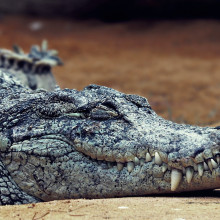
52:45 - QotW - Why are crocodile scales so bumpy?
QotW - Why are crocodile scales so bumpy?
This week, Sally Le Page has had a large scale problem to solve, so she enlisted the help of James Hennessy, from Ireland's National Reptile Zoo...
Johan - Why is crocodile skin so bumpy and not smooth?
Sally - Johan is clearly a fearless explorer who’s not afraid to get up close and personal to big predators in the name of science. To help us out, we need an equally fearless expert: James Hennessy from Ireland’s National Reptile Zoo:
James - When we think of crocodiles, we usually think of big scaly beasts with sharp teeth. The skin of some is bumpier than others - and there are 24 different species of crocodilian. These bumps, or scales, are really important for crocodiles, and maybe one of the reasons they've survived since before the dinosaurs! All reptiles have these scales, it's one of the reasons we call it a reptile. These strong bumpy scales help to protect them from predators and injury. In the case of crocodiles, that injury can come from other crocodiles! So if you need to protect yourself from another crocodile's sharp teeth, what better way than an armour of big thick bumpy scales!
Sally - Crocodiles attacking other crocodiles? I do not want to be in the water when that happens! But the bumpy skin is for more than just fighting. Turns out these thick skinned creatures have a warmer side to them:
James - These bumpy scales, called osteoderms, have another really important, and really cool function. They work like mini solar panels, gathering heat from the sun and helping the crocodile to get the same energy that we would get from food. They can move blood from cooler parts of their body, into these bumpy scales, and heat it up! They don't even need to expose their entire body to the sun, and so can hide mostly underwater and still stay warm. That's a great skill if you need to sneak up on your prey!
Sally - I’d love to be able to stay warm from the sun while swimming in cold water. Maybe these crocodiles are onto something! On the forum, Evan and Alan both pointed out that while crocodiles have these big bumpy scales on their backs, the scales on their bellies are quite smooth, useful if you’re dragging your belly through the mud. But one forum user, bored chemist, had a much more practical answer: Why is a crocodile's skin so bumpy? Well, have you ever tried to iron one? Next week we’ll be droning on about Covid again with this question from Paul
Paul - If one is recovering or has recovered from Covid, would playing bagpipes help to expand the lungs and be beneficial or detrimental?
Related Content
- Previous Sperm and squid in space
- Next Our PS5 arrives!










Comments
Add a comment